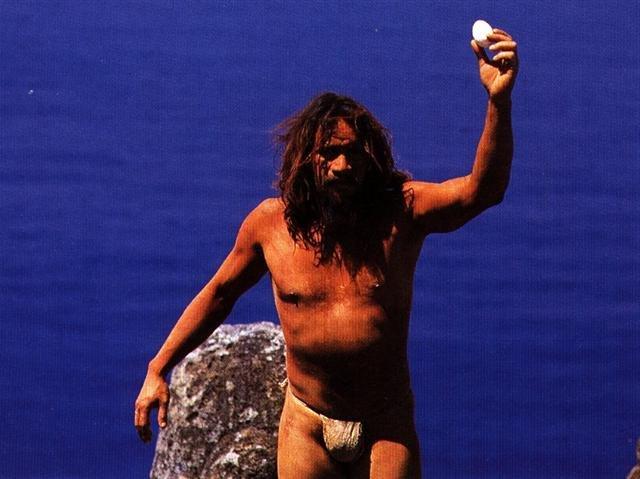9. The haga rave glyph type could refer to the season of Spring Sun, when the sky roof is open and his nourishing rays are pouring in. Probably the glyph type is meant to illustrate the opposite of the beams in the night supporting the roof of a hare paega:
Sun moves across the spring sky in his canoe, and in the night the sky is like an overturned canoe. The general idea is to illustrate darkness by a sign which covers (like the black cloth), for instance by using a reversed haga rave. When a new year is brought by manu tara in spring, the yearly contest for grabbing (rave) an egg illustrates the character of the new season:
This gesture of triumph is evidently used also in the rongorongo system:
Tagata in Ga3-7 illustrates how the low 'night' is ending by continuing high up (among the birds). The exit hole in our hare paega picture probably indicates this time of the year, when the flow of time continues on the outside in the sun light. This should be where Hanga Te Pau is located, i.e. when 'land' is reached, when the high roof is beginning, and not at any of the corners of the island. The arrival of manu tara is at the southwest corner of the island, but Hanga Te Pau is not at a corner because it is still 'defined' according to the rules of the the night. Page 17 is in the sea and Hanga Te Pau is mentioned on page 17:
|



